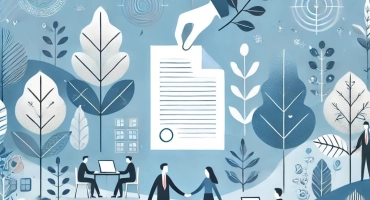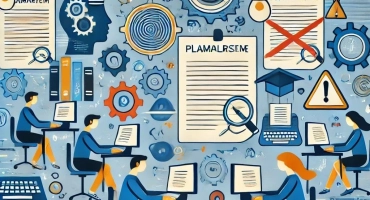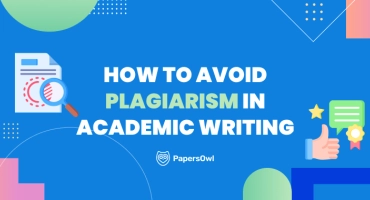Plagiarism on Social Media: How to Detect and Avoid It
Table of contents
The purpose of this guide is to explore plagiarism on social media to help you detect and avoid it easier.
The damage caused by plagiarism in the academic research environment is evident. We hear stories of students that violate the academic environment or politicians with stolen speeches, yet what about plagiarism on social media? As one sees reposts and shared tweets with little to no changes, honesty lines quickly become blurred. It is not a traditional plagiarism definition paradigm because networks like Instagram and Facebook can’t function otherwise. It always depends on a particular user who keeps up with the morals and copyright restrictions. Nevertheless, it becomes impossible to identify who wrote this or that first because we are dealing with numerous reposts and links that lead to social media users.
What is Social Media Plagiarism?
Still, what defines social media plagiarism? When you take someone’s original content and claim that it is yours, saying that you are an original creator, it is considered a theft of intellectual property. For example, if you are sharing a screenshot of a business marketing template and claim that it is yours by placing the name of your company on a screenshot, it is not only unethical but becomes a serious offense.
Some other plagiarism cases are even more challenging. It may be impossible to find an original author as you share someone’s post that you like. Is it considered plagiarism? Both “yes” and “no.”It always depends on what’s being shared and if some editing or changes have been made. If you share someone’s thoughts on vaccination, yet post it as your original content, it represents a problem that may remain under the radar for years.
Can social media plagiarism be addressed? Unfortunately, it is more challenging compared to a college assignment, research paper meant for publishing, or a business website that can be controlled. While it is possible to locate dozens of social media posts that contain your original content, it is virtually impossible to take it down right away.
Can You Plagiarize on Facebook?
Technically you can but anti-plagiarism rules on Facebook are exactly the same as with most online environments. It is wrong to assume that social media is a place of freedom where anything can be done without consequences. Approaching the “report abuse” feature of Facebook, people can open copyright infringement disputes and claim that their work has been stolen or altered. Facebook has special algorithms that can locate specific images or even posts with keywords that will help them protect your intellectual property. The problem is that it may take months to have such issues resolved.
Why Does Social Media Plagiarism Become Possible?
It is the general environment of social media that has the very culture of tweeting, sharing, commenting, reposting, and becoming famous by using someone else’s text or images as one’s own. It is also based on the chatroom concept where being anonymous always comes first. It makes people believe that plagiarism cannot be traced. Unlike a website that has an URL, social media posts can be blocked, deleted, or changed within a minute. It still makes it easy to keep screen captures as the dispute is being addressed. Of course, when images and videos are being shared on Facebook, Twitter, TikTok, or Instagram, it is not always done intentionally as users create fan content based on copyrighted songs or images. As there is no original source being mentioned in most cases, it is a violation of intellectual property rights.
Main Social Media Plagiarism Causes
- Intentional Social Media Plagiarism.
It relates to those cases when people do not just repost or share copyrighted content (which is inevitable) but create artwork, video presentations, or lengthy blog posts based on someone else’s work. Intentional plagiarism stands for commercial purposes and deals with advertising or creating something that brings certain profits. It always contains claiming of one’s authorship. It may either include minimal changes or have no alterations at all. The good side is that such information can be caught by plagiarism detection tools. These may involve anything from press releases, magazine articles, schemes, presentations, artwork, audio recordings, or any marketing information.
- No Clear Intellectual Property Protection Tools.
Even though networks like Facebook have certain complaint review instruments, stealing on social media is mostly left without control. There is no culture of original source citation as there is hardly any punishment for incorrect citing or ignoring it entirely. The worst scenario that a person can see is blocking some post or decreasing one’s SEO ranking. Tracing a person who has posted something is not always helpful since the profile may be fake and leading us nowhere. Social media posts are also difficult to trace unless it is a Law Enforcement claim. It shows that proper intellectual property protection instruments must be developed to fight social media plagiarism.
- No Communication Culture.
Social networks have started as a place to communicate, yet failed to develop any strict rules or a Fairplay culture as it quickly became commercial and a place where people compete. While some individuals aim for fame and recognition, the methods that they use are not always honest. As result, we have thousands of social network posts on a certain subject daily where copying and sharing go without any control or referencing. The challenge is that most people do so without realizing that they plagiarize or use someone else’s work. Be it text, audio, images, or videos, things are reposted all over the world. It makes it almost impossible to determine who has started some trend or posted an original image.
- User Credibility Aspect.
Another problem is that many content creators post their information online without being able to protect their intellectual property. Some content creators use an anon IG viewer to monitor potential plagiarism of their work on private Instagram accounts without alerting suspected copycats. Some people do not see it necessary to claim their authorship as they do not think that someone can steal it and claim it as their own. It is also a cultural aspect where user credibility is respected. If you see that something is valuable enough to be quoted, it only takes a minute to try and find an original source.
Is Social Media Plagiarism Problematic?
Since we are dealing with the theft of intellectual property, it is always problematic. What makes it challenging is a major difference between writing for academia and creating a post of what you like from the news reports. Still, when people create movie or book reviews online, talk about the latest albums or video game creations, copying entire paragraphs from original reviews or professional journalists must be credited. It is one thing to repost something “as is” but a completely different issue when you create some post where the majority of content is not yours. Is it the same as passing an assignment where you cheat or cut the corners? While it may sound different, the core values at play are the same because we are dealing with honesty and original authorship.
No Rules?
Social media platforms are always approached as something that has no rules where anyone can be a famous person with relevant resources or imposter of an artist who collects all available works while claiming them as their own. It becomes difficult as we can see thousands of duplicate images circulating through various posts where authorship can’t be traced back to who posted it first. We see images resized and cropped, text edited or commented upon. Who becomes the owner of all this distorted data and who must be held responsible?
The rules that we have are mostly coming down to those of academic integrity, where being fair, honest, responsible, and caring are still there. What must be mentioned is that social media reposting is not the same as academic writing where citation rules are taught and required. Still, when a person steals something with commercial intent, it is always a case of plagiarism regardless of where and how it is posted. The rules remain the same!
Cases of Plagiarism In Social Media
If we take only one day that Internet users spend online, we shall have approximately two million blog posts that are being written and about 4.7 billion minutes spent on Facebook. This information is not static like a college paper that has been written and checked by some college professor. It makes social media a constantly flexible environment where the evolution of plagiarism must be approached differently.
Here are the most common cases of plagiarism that can be encountered on Facebook, Twitter, or Instagram:
– Video Content.
It relates to sharing videos or slideshow presentations while stating that they are yours. Since we have a countless number of video editors or people who create celebrity content or take pictures of animals that have been made by professional photographers, it becomes a form of plagiarism. Even if it is unintentional, background music that has been used or any multimedia content for your video is a violation of the original creator’s rights.
– Audio Snippets.
The same relates to audio plagiarism that is not only encountered by musicians or those who work with video games. Let us take some examples when a politician posts an audio clip on Twitter or Facebook with the background music by Tom Petty’s famous “I Won’t Back Down” for a campaign. Of course, those who hold the rights to the song may not support a particular politician, yet it is not the primary reason as one should have asked for permission. Talking of Instagram influencers with thousands of subscribers, such cases of plagiarism are most often ignored.
– Reposting without Permission.
Sharing someone’s social media post without obtaining their permission and not crediting them for the original content is a form of plagiarism. This can include reposting images, videos, or written content without acknowledging the original creator.
Example: A popular food blogger shares a unique recipe with detailed instructions on their blog. Someone copies the entire recipe, word for word, and publishes it on their social media platforms without acknowledging the original author.
– Reposting with Editing.
This one is more complex. Reposts are happening every second with user editing. Imagining a situation where someone would post a reference or additional link is hardly possible because most online users repost things automatically. It’s hard to determine whether this is considered plagiarism in 2021, yet when something has been altered, it is already a plagiarism case.
– Images Cropping.
We can see millions of online artists on Facebook or Instagram who share their holiday pictures. What makes some of these quite interesting is the inclusion of professional photographs that truly stand out, often sourced from platforms like DepositPhotos. Without a doubt, we all want to share a beautiful picture or a painting that we’ve found online. Some people do provide credit for museum exhibitions or scenery photographs. Why does it happen? It comes from a person’s unique attitude to someone’s work. It is always a matter of culture that starts from middle school when a person realizes that stealing someone’s thoughts and ideas is wrong.
– Filesharing.
Another important example related to social media is file sharing. It can include books, documents, movies, music, academic papers, or any other kind of information.
All of these aforementioned cases lead us to international intellectual property disputes and legislation, which is a topic that must be discussed in greater depth.
How to Prevent Plagiarism on Social Media?
- Protect Your Content. There will always be people who will go against ethics and existing rules. That is why you must research the ways how you can protect your images, videos, text, or not post them on social media at all. When you can prove that something that has been created is yours, you are already protected.
- Provide Information About Copying. Add information below every image or post that you make about copying rights and licensing. While these are mostly ignored, it may be helpful regarding who the author is and what consequences one may have.
- Adding Watermark Protection. Speaking of multimedia content, think about adding a watermark or code-driven protection for audio recordings or mobile apps.
- Post Plagiarism Rules Messages. If we have more posts about plagiarism rules and consequences for students, educators, influencers, or bloggers, it will help us to see how damaging it can be when some intellectual property is stolen or not given due credit for.
- Use Online Plagiarism Checker. Most importantly, you can use a plagiarism detector, which will help you to avoid plagiarism as you make a social media post before you click “send”. It will also help you see if certain texts can be encountered online. It is a good way to find an original author or website that already contains some similarities.
- Become an Anti-Plagiarism Influencer. Start a campaign against plagiarism. If you do so, it may go viral and actually do some good!
- Ask For Permission & Provide References. Finally, always ask for permission if you can get in touch with an original author. Provide original sources (if you have them) at the beginning of your post since many people might not read until the end of some post.
These simple rules will help to fight plagiarism on social media and also protect those who post on Facebook, make tweets, and share their personal creations on Instagram.
Changing Social Media Culture
Remember that you can change social media culture by starting doing things differently yourself. When other people will notice that you provide references, show authorship, and take care of what is being posted, it will make a difference. We must instill a culture of mutual respect and care for what other people have done.







